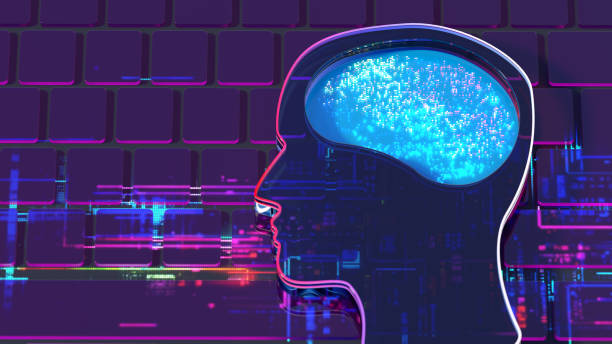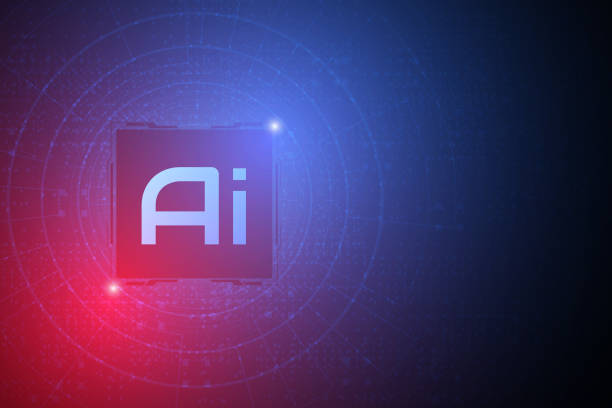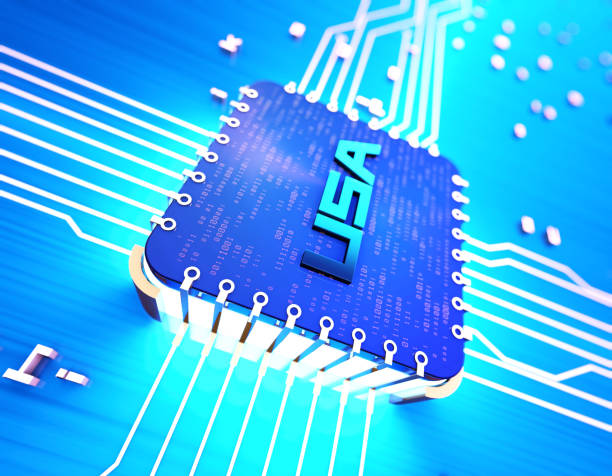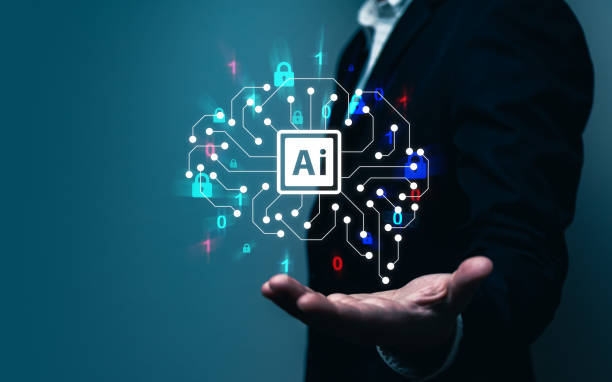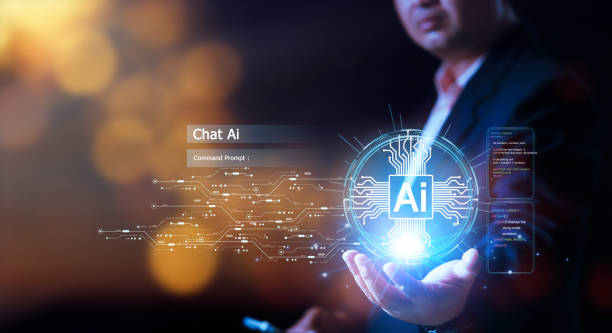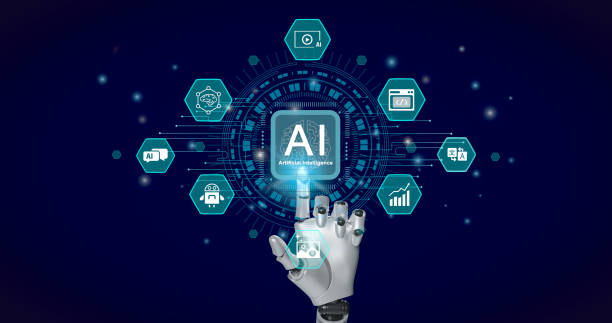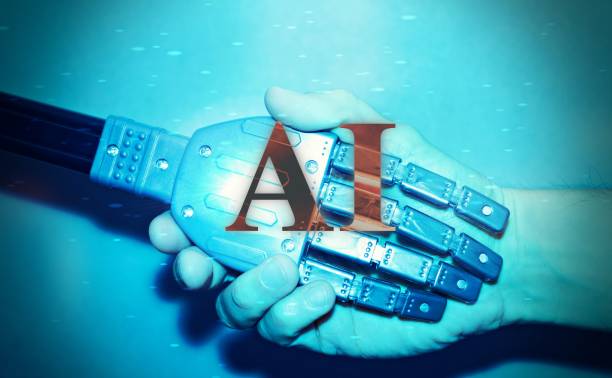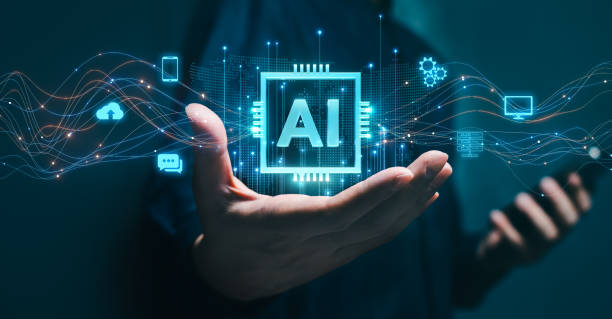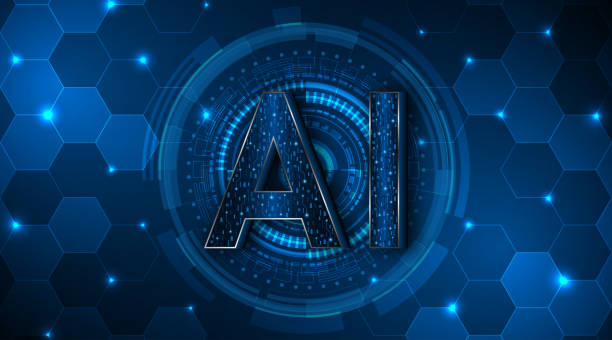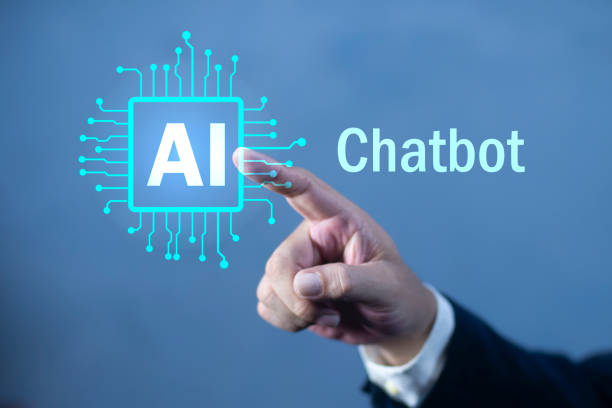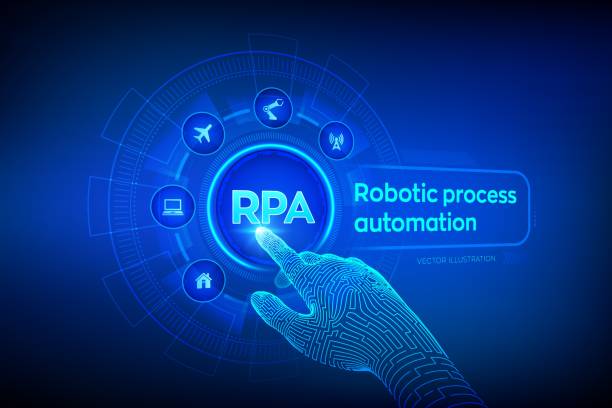What is an AI Robot: Definition, Applications, and Types
#AI Robot is a combination of two distinct fields: Artificial Intelligence and Robotics.
Simply put, an AI robot is a physical machine that uses AI algorithms to perform tasks automatically and intelligently.
These tasks can include navigating a complex environment, recognizing objects, answering questions, performing complex calculations, and even learning from experiences.
In other words, an AI robot tries to mimic human cognitive abilities and apply them in the physical world.
These robots are used in various industries, including manufacturing, healthcare, logistics, customer service, and even education.
There are different types of AI robots, including industrial robots, service robots, medical robots, and military robots, each designed for specific purposes.
An AI robot uses sensors and cameras to collect environmental information and then uses complex algorithms to analyze this information and decide what to do.
Did you know that customers’ first impression of your company is your website? Multiply your business credibility with a powerful corporate website from Rasaweb!
✅ Exclusive and eye-catching design tailored to your brand
✅ Improved user experience and increased customer attraction
⚡ Get a free consultation!
Main Components of an AI Robot
An AI robot consists of several main components, each of which plays an important role in its performance.
These components include: 1.
Sensors: Sensors collect information about the surrounding environment.
This information can include images, sounds, temperature, pressure, and location.
2.
Processor: The processor processes the information collected by the sensors and decides what to do.
The processor is usually a computer that runs AI algorithms.
3.
Actuators: Actuators execute the processor’s commands.
These commands can include moving, grabbing objects, speaking, or doing anything else.
4.
Power Supply: The power supply provides the energy needed for the robot to function.
This source can be batteries, solar cells, or a connection to electricity.
5.
Software: Software includes AI algorithms and control programs that allow the robot to perform its tasks.
This software is usually written using programming languages such as Python, C++, or Java.
With the coordination of these components, an AI robot is able to operate in different environments and perform various tasks automatically.
The use of machine learning algorithms allows these robots to improve their performance over time.
AI Algorithms Used in Robots
AI algorithms play a vital role in the performance of an AI robot.
These algorithms allow robots to process information, make decisions, and learn.
Some of the most common AI algorithms used in robots include: Machine Learning: These algorithms allow robots to learn from data and improve their performance.
There are different types of machine learning algorithms, including supervised learning, unsupervised learning, and reinforcement learning.
Computer Vision: These algorithms allow robots to process images and recognize objects.
Computer vision is very important for robots that need to move in complex environments or interact with objects.
Natural Language Processing: These algorithms allow robots to understand and respond to human language.
Natural language processing is very important for robots that need to interact with humans.
Planning: These algorithms allow robots to create plans to achieve their goals.
Planning is very important for robots that need to perform complex tasks.
These algorithms working together enable the AI robot to operate automatically and intelligently.
| Algorithm | Application |
|---|---|
| Machine Learning | Improving performance through data |
| Computer Vision | Object recognition and image processing |
| Natural Language Processing | Understanding and responding to human language |
| Planning | Creating plans to achieve goals |
Applications of AI Robots in Various Industries
AI robots have wide applications in various industries and help improve efficiency and reduce costs.
In the manufacturing industry, AI robots are used to perform repetitive and dangerous tasks such as welding, painting, and packaging.
In the healthcare industry, AI robots are used to perform precise surgeries, assist in patient rehabilitation, and provide home healthcare.
In the logistics industry, AI robots are used for warehousing, transporting goods, and delivering packages.
In the customer service industry, AI robots are used to answer customer questions, provide technical support, and conduct online transactions.
In the education industry, AI robots are used to provide personalized education, help students learn, and assess student performance.
Also, AI robots are used in agriculture for harvesting crops, spraying pesticides, and intelligent irrigation.
This diversity of applications shows that AI robots can play an important role in improving human lives.
Are you annoyed by losing customers who visit your site to make a purchase?
Rasaweb is your specialized solution for having a successful online store.
✅ Significant increase in your online sales
✅ Creating trust and professional branding with customers⚡ Get a free consultation from Rasaweb experts!
Advantages and Disadvantages of Using AI Robots
The use of AI robots has its own advantages and disadvantages.
The advantages of using these robots include increased efficiency, reduced costs, improved quality, increased safety, and the ability to perform complex and dangerous tasks.
AI robots can work 24 hours a day without getting tired, which leads to increased production and reduced task completion time.
Also, these robots can perform tasks that are dangerous for humans, such as working in polluted environments or working with hazardous chemicals.
But the use of AI robots also has disadvantages.
These disadvantages include the high cost of purchase and maintenance, the need for expertise in programming and maintenance, and ethical concerns about replacing human labor.
Also, AI robots may not function correctly in unexpected situations and may require human intervention.
Therefore, before using an AI robot, its advantages and disadvantages should be carefully considered and a decision should be made as to whether the use of these robots is appropriate for a particular application.
AI robots require robotics expertise.
Click here to preview your posts with PRO themes ››
Challenges Facing the Development of AI Robots
The development of AI robots faces several challenges.
One of the most important challenges is the development of AI algorithms that can work effectively in the real world.
These algorithms must be able to cope with unexpected conditions and environmental changes and make the right decisions.
Another challenge is the development of hardware that can meet the needs of AI robots.
This hardware must be lightweight, powerful, and durable and be able to operate in harsh conditions.
Also, the development of AI robots faces ethical challenges.
These challenges include concerns about replacing human labor, privacy, and security.
For example, the use of AI robots in warfare could lead to decisions that are not ethically acceptable.
Therefore, the development of AI robots should be done with these challenges in mind and with a responsible approach.
AI robots should be developed in accordance with ethical principles to prevent possible problems.
Another challenge is collecting and labeling the data needed to train machine learning algorithms, which can be very time-consuming and expensive.
What to Expect from the Future of AI Robots
The future of AI robots is very bright and full of potential.
It is expected that in the future, AI robots will play a much more important role in various industries and help improve human lives.
In the future, AI robots will be able to perform more complex tasks, interact with humans more naturally, and even understand human emotions.
For example, AI robots can be used in medicine to diagnose diseases, provide personalized treatments, and perform complex surgeries.
In education, AI robots can help students learn as personalized teachers.
In industry, AI robots can help improve efficiency and reduce costs.
Also, it is expected that in the future, AI robots will play a more important role in our daily lives.
For example, home robots can help us with daily tasks, protect our homes, and even become our friends.
However, the development of AI robots must be done with ethical and social issues in mind to prevent possible problems.
| Area | Expectations |
|---|---|
| Medicine | Disease diagnosis and complex surgeries |
| Education | Personalized teachers |
| Industry | Improved efficiency and reduced costs |
| Daily Life | Home robots and help with daily tasks |
Click here to preview your posts with PRO themes ››
The Difference Between Regular Robots and AI Robots
The main difference between regular robots and AI robots is their level of intelligence and ability to learn.
Regular robots are usually programmed to perform repetitive and predetermined tasks and cannot make decisions in unexpected situations.
These robots operate based on a fixed set of instructions and cannot learn from their experiences.
In contrast, AI robots use machine learning algorithms and can learn from data and improve their performance.
These robots can make decisions in unexpected situations and perform more complex tasks.
In other words, AI robots try to mimic human cognitive abilities and apply them in the physical world.
For example, a regular robot may be programmed to weld car parts, while an AI robot can use computer vision to recognize car parts and perform the welding automatically.
AI robots use sensors and complex algorithms to decide what to do.
Are you worried about the low conversion rate of your online store and not getting the sales you want?
Rasaweb is your specialized solution for having a successful online store.
✅ Significant increase in conversion rate and sales
✅ Professional and user-friendly design to attract customer satisfaction
⚡ Are you ready for a transformation in online sales? Get a free consultation!
The Impact of AI Robots on the Labor Market
The impact of AI robots on the labor market is a complex and controversial issue.
On the one hand, AI robots can increase productivity and reduce costs by performing repetitive and dangerous tasks.
This can lead to increased profitability for companies and the creation of new job opportunities in areas related to the development, maintenance, and use of AI robots.
On the other hand, AI robots can lead to job losses by replacing human labor.
Especially jobs that require low skills and repetitive tasks are more at risk.
For example, AI robots can replace human labor in manufacturing, customer service, and transportation.
To reduce the negative effects of AI robots on the labor market, it is necessary for governments and companies to provide training and retraining programs to help workers learn new skills and adapt to changes in the labor market.
Also, it is necessary to adopt policies to support unemployed workers and create new job opportunities in areas related to new technologies.
AI robots should be developed in such a way that they help increase their abilities instead of replacing human labor.
Ethical Considerations in the Development and Use of AI Robots
The development and use of AI robots is associated with several ethical considerations that should be taken into account.
One of the most important ethical considerations is accountability.
If an AI robot makes a mistake and causes damage, who will be responsible? The robot’s manufacturer, the programmer, or the user? Another issue is privacy.
AI robots can collect a lot of information about us, including personal information, habits, and preferences.
How can this information be protected and prevented from being misused? Also, there are concerns about discrimination and fairness.
If AI robots are used to make decisions about hiring, loans, or punishment, how can we ensure that these decisions are fair and non-discriminatory? In addition, issues related to independence and control are also raised.
If AI robots become too independent, how can they be controlled and prevented from doing things that are harmful to humans? To solve these problems, it is necessary to create an ethical framework for the development and use of AI robots that includes the principles of accountability, privacy, fairness, and control.
AI robots should be developed in accordance with these principles to prevent ethical problems.
Click here to preview your posts with PRO themes ››
Frequently Asked Questions
| Question | Answer |
|---|---|
| What is an AI robot? | An AI robot is a machine capable of understanding its environment, reasoning, learning, and making decisions to perform tasks independently. |
| What is the difference between regular robots and AI robots? | Regular robots perform repetitive tasks based on prior programming, while AI robots can learn from experience, interact dynamically with the environment, and even behave in a way that resembles human intelligence. |
| What are the main applications of AI robots? | They are used in industries (manufacturing, assembly), medicine (surgery, diagnostics), services (customer support, domestic), exploration (space, underwater), and many other fields. |
| What technologies are used in the construction of AI robots? | Machine Learning, Computer Vision, Natural Language Processing, Deep Learning, and Robotics are among the key technologies. |
| Can AI robots have emotions? | Currently, robots do not have emotions in the human sense. They can identify and react to emotions, but they do not experience emotions themselves. |
| What are the main challenges in developing AI robots? | Safety, reliability, ethics, autonomy, adaptability to complex environments, and natural interaction with humans are major challenges. |
| How are AI robots trained? | They are typically trained using large amounts of data, machine learning algorithms, and deep learning to identify patterns and make decisions. |
| Examples of AI robots in everyday life? | Smart robotic vacuum cleaners, customer support chat robots, self-driving cars, and surgical robots in hospitals. |
| Are AI robots a threat to human jobs? | Some repetitive jobs may be automated, but at the same time, robots can increase productivity and create new jobs in the development, maintenance, and monitoring of these systems. |
| How is the future of AI robots predicted? | They are expected to become more intelligent, autonomous, and capable of performing more complex tasks and interacting more closely with humans in various environments. |
and other services of Rasa Web advertising agency in the field of advertising
Smart customer journey map: Professional optimization to increase website visits using marketing automation.
Smart custom software: Transform campaign management with intelligent data analysis.
Smart direct marketing: A dedicated service to grow user engagement based on optimizing key pages.
Smart content strategy: A professional solution for digital branding with a focus on customizing the user experience.
Smart UI/UX: A combination of creativity and technology to improve SEO ranking through custom programming.
And more than hundreds of other services in the field of internet advertising, advertising consulting, and organizational solutions
Internet advertising | Advertising strategy | Advertorial
Resources
What is a smart robot in industry?
,Smart robot (AI Robot)
,Types of smart robots in various industries
,What is artificial intelligence? Applications of artificial intelligence in today’s world
? To improve your business in the digital world, Rasaweb Afrin digital marketing agency smoothes your path to success by providing innovative solutions such as exclusive website design, professional SEO, and targeted advertising campaigns. Join us to have a powerful presence in the online market.
📍 Tehran, Mirdamad Street, next to the Central Bank, South Kazerun Alley, Ramin Alley No. 6

